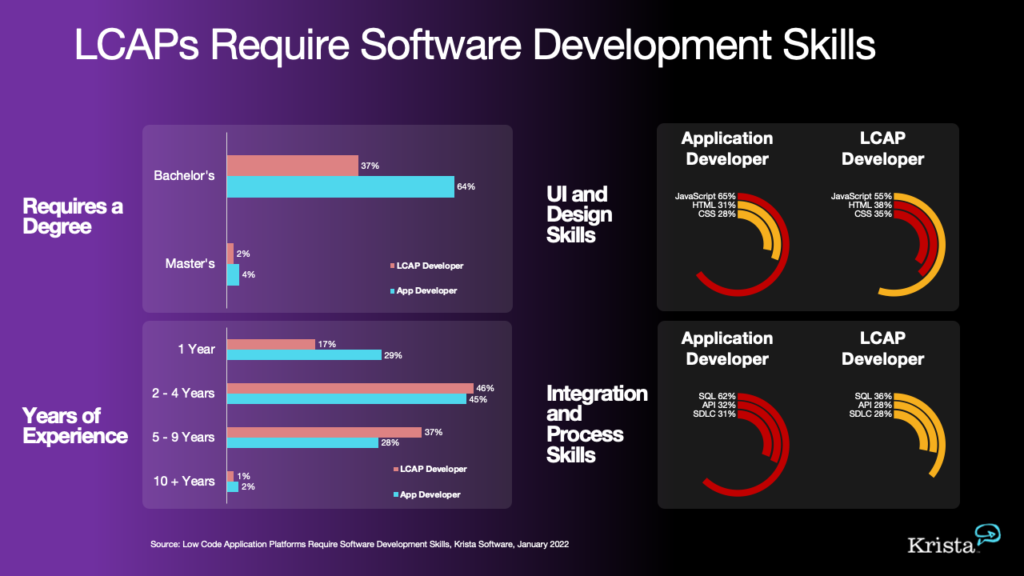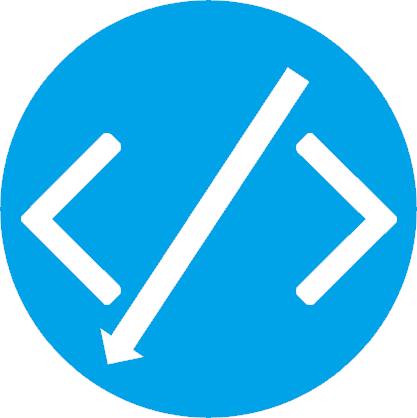Excellent Reasons For Picking Low-code platforms for application development
Wiki Article
Advantages Of Low-Code Application Development In Terms Of Accessibility For Non-Developers
Low-code application development significantly improves accessibility for non-developers, often referred to as "citizen developers," because of several important factors: Intuitive Visual Interfaces:
Drag-and-Drop Builders: Low-code platforms have drag-and-drop interfaces that enable non-developers to build applications without writing code. This makes development easier for people with technical background.
WYSIWYG: WYSIWYG editors are "What you see is what you Get" editors that let users to design workflows and interfaces that are similar as the final product. This makes it simpler to use and understand.
Simplified Design of Workflow Logic and Workflow:
Visual Workflow Modeling: Users are able to develop business processes, applications logic and flowcharts through diagrams and visual flowcharts. These techniques are more intuitive than traditional coding methods.
Low-code platforms usually come with pre-built logic elements (e.g. the conditional loops, statements) which eliminate the need for complicated coding.
Reusable Components and Templates
Libraries of Templates that are pre-built A lot of platforms that allow low-code have templates available for the most common applications. This lets developers get started quickly and easily and non-developers to modify the templates however they see fit.
Reusable Widgets and Modules Users can make use of modular and reusable widgets which can be created faster, reducing the time needed to create them and reducing the requirement for technical expertise.
Guided Development & Tutorials
Step-by-Step Instructions: Platforms frequently provide guided development pathways or online tutorials screen-based instructions that can assist users who aren't developers to create applications.
Interactive Tutorials. Interactive, hands-on tutorials let users learn by doing.
Integration with Existing Tools:
Seamless Integration: Low-code platforms have been built to easily integrate with existing tools for business and systems (e.g. CRM, ERP and ERP) which allows non-developers to create applications that work within their current workflows.
APIs and Connectors: Built-in APIs and connectors make it easier to integrate the process and allow non-developers to connect their applications with external services, without requiring complicated coding.
Collaboration Features:
Team Collaboration: Features like real-time collaboration, as well as shared workspaces let non-developers to work alongside business analysts, professional developers, and other stakeholders effectively.
Role-based Access Control: Non developers can be assigned specific roles and access levels. This allows them to participate in the development process without compromising security and performance.
Automated Debugging, Debugging, and Testing
Low-code platform often comes with a built-in testing and debugging tool that simplifies the process. Non-developers are now able to verify that their app is working correctly.
Error Highlighting When errors occur the platform highlights them and offers possible solutions. It assists non-developers with finding solutions.
The capability of low-code apps to facilitate development to non-developers is their biggest advantage. By providing intuitive, visual tools as well as guided experiences, low-code platforms enable business users to be actively involved in the creation and maintaining apps, thus bridging the gap between requirements of business and technical implementation. Read the best his explanation for Low-code Platform for application development for website examples including low code development platforms, rad development, develop web app, push alerts, rapid applications, application development platforms, azure sql server, low code platforms, multiplatform mobile app development, rapid application design and more.

Benefits Of Low-Code Application Development In Terms Of Governance And Security
Low-code development has several benefits in terms of security and governance. They are essential for ensuring applications are secure, reliable and well-managed throughout their entire lifecycle. Here are some of the main advantages:
Unified Management Console (UMC): Low-code applications typically provide a centralized management console that allows administrators to supervise and manage all applications and ensure that they have a consistent management system across the organization.
Role-Based Access Control RBAC : These platforms usually include robust access controls based on roles, which permit administrators to define and enforce policies. This guarantees that only users who are authorized are able to access or modify particular parts of an application.
Compliance and Regulatory Adherence
The advantages of conformity: Many platforms using low-code have been designed to be in line with industry standards. They provide tools and templates to ensure that their applications comply with these standards.
Audit Trails and Logging Audit trails and logs that are comprehensive are typically integrated, allowing companies to monitor changes, track access and ensure compliance with internal as well as external rules and regulations.
Increased Security Measures:
Data Encryption Low-code platforms typically come with built-in encryption of information in transit and in rest, securing sensitive information.
Security Certificates: A lot of low-code companies have a security certificates (e.g. ISO 27001 and SOC 2) which demonstrate that they are adhering to strict security standards. They offer an additional security level to their customers.
Automated Security Updates
Regular Security Updates and Patches Low-code platforms handle automatically security updates, patches and upgrades. The applications are thus secured from threats of the present without requiring manual intervention by developers.
Security Monitoring Tools: These instruments send alerts that are updated in real time, and provide information about security issues that could be causing problems.
Data Governance
Data Access Policy: These platforms let organisations define and enforce policies for data access, making sure that only authorized users have access to data and that it is used properly.
Data Masking and Anonymousization: The built-in tools to hide and anonymize data can help safeguard sensitive data when working in testing or development environments.
Consistent Lifecycle Management of Applications:
Pipelines for development and deployment Low-code platforms provide integrated development and deployment pipelines that contain security tests. These ensure that security is maintained through the entire lifecycle of the application.
Version Control. Integrated version management helps track and reverse any changes that are made to the program, making sure that its integrity is preserved.
User Authentication & Authorization:
Single Sign-On (SSO) Support for single sign-on and other advanced authentication techniques makes managing users easier and increases security.
Multi-Factor Authentication A lot of platforms have built-in multi-factor support, adding additional security when accessing apps.
Policy Enforcement and Compliance Monitoring:
Policy Templates: Low-code platforms often include pre-defined templates for security and governance which allow companies to swiftly adopt policies.
Compliance Monitoring Tools - These instruments allow for continuous monitoring of compliance status, and also provide reports, making it simple to identify and resolve any issues that might arise.
Integration into Existing Security Infrastructure
Seamless Integration: Low-code platforms are designed to be integrated with existing security tools and infrastructure, like identity management systems SIEM (Security Information and Event Management) solutions, and firewalls.
API Security: API security features built-in allow integration with other systems, safeguarding data and maintaining integrity of the applications.
Best practices and training:
Best practices guides: A lot of platforms include guidelines and recommended practices for the development of secure applications. These help non-developers meet security requirements.
Security Training Some low-code providers offer security tools and training for users in order to help them understand how to maintain and build secure applications.
The security and governance features of low-code applications make sure that they are built and managed in a regulated and compliant manner. These platforms are equipped with the frameworks, tools and regulatory compliance that are required to protect sensitive customer data, enforce policy, and ensure compliance with regulatory requirements, while also simplifying the administration and supervision of the development process. See the top rated continued for site recommendations including develop web app, rapid app development, cross platform mobile dev, developing mobile apps, ms azure sql, driver jdbc, develop web app, developing mobile apps, application modernization, rad application development and more.

Low-Code App Development Offers Many Advantages In Terms Collaboration And Workflow
The low-code approach to application development offers a variety of advantages in regards to workflow and collaboration and collaboration, making it a great option for businesses looking to boost team productivity and streamlining their development processes. Here are a few benefits.
Unified Development Environment: Low-code platforms provide a single, unifying environment where team members comprising business analysts, developers designers, and other stakeholders can work efficiently. This helps eliminate silos and encourages more effective communication.
Visual Development: The low-code platform's visual drag-anddrop capabilities make it easy for non-technical team members to contribute in the design process. It also ensures business needs are properly documented and implemented.
Communication Enhancement
Real-Time Collaboration Many low-code platforms have real-time features such as commenting and editing simultaneously, or instant feedback. This allows for constant communication and can help reduce the amount of time spent on back-and-forth discussions.
Shared workspaces. Teams can collaborate on shared workspaces. There, they are able to review, edit, and debate various project elements.
A streamlined workflow management system:
Project management tools that are built-in Low-code platforms usually come with project management tools which allow teams to organize, track and manage their projects. This includes task assignments along with progress tracking and management of deadlines.
Workflow Automation Automating repetitive tasks or workflows allows teams to focus their efforts on more strategic initiatives and tasks and improves the overall efficiency of the company.
More frequent iteration cycles:
Rapid Prototyping: Low-code platforms enable quick prototyping and iterative development which allows teams to create prototypes, test, and refine applications over shorter periods of time. This allows for feedback to be quickly integrated into the application, and for rapid enhancements.
Support for Agile Development: Using agile methods allow teams to work continuously in sprints. This allows them to adapt and deliver small increments to functionalities.
Accessibility:
Citizen development: Low-code platforms permit business users to create and modify applications with no programming expertise. This reduces the burden on IT and development teams and facilitates faster response to the business demands.
Training and onboarding. Intuitive tools and extensive training materials help the new team members get acquainted increasing the overall quality of collaboration.
Centralized Documentation, Knowledge Sharing and Information Sharing
Documentation is integrated into low code platforms often come with features to create and maintain documentation on the platform, allowing for all project details to be centralized.
Knowledge Repositories. Teams are able to develop and manage knowledge repositories which include best practices templates and reusable component, facilitating sharing of knowledge and decreasing the amount of duplicate work.
Consistency in Standardization:
Standardized Components: The use standardized, pre-built components provides uniformity across different applications and makes it easier for team members to understand and collaborate on various aspects of a project.
Governance and compliance Frameworks built-in for governance ensure that all applications are created in line with the organizational standards, regulations requirements and quality standards. They reduce the risk of not being compliant and ensure that applications meet specifications.
Feedback and Improvement Loops:
Integrated Feedback Mechanisms: Low-code platforms often provide integrated feedback mechanisms that allow users to provide easy feedback to applications. This can then be incorporated into the process of development.
Continuous Improvement: The capability of quickly iterating and deploying changes based upon feedback ensures that applications are continuously enhanced, and are in line with the needs and objectives of users.
Visualization and reporting
Real-Time Analysis Tools for Analytics and Reporting integrated into the software give instantaneous information about project progress, user interaction and overall performance. This allows an informed decision-making process based on data.
Visual Workflow Maps Software for mapping workflows or processes are helpful to teams in understanding their processes. They also help to identify bottlenecks, and areas that require improvement.
Low-code development has many advantages in terms of workflow and collaboration. It is able to bring disparate teams together, streamline processes, streamline communication, and boost collaboration. This creates a more collaborative atmosphere with an agile and efficient development process that results in more high-quality apps as well as a better alignment between business goals.
